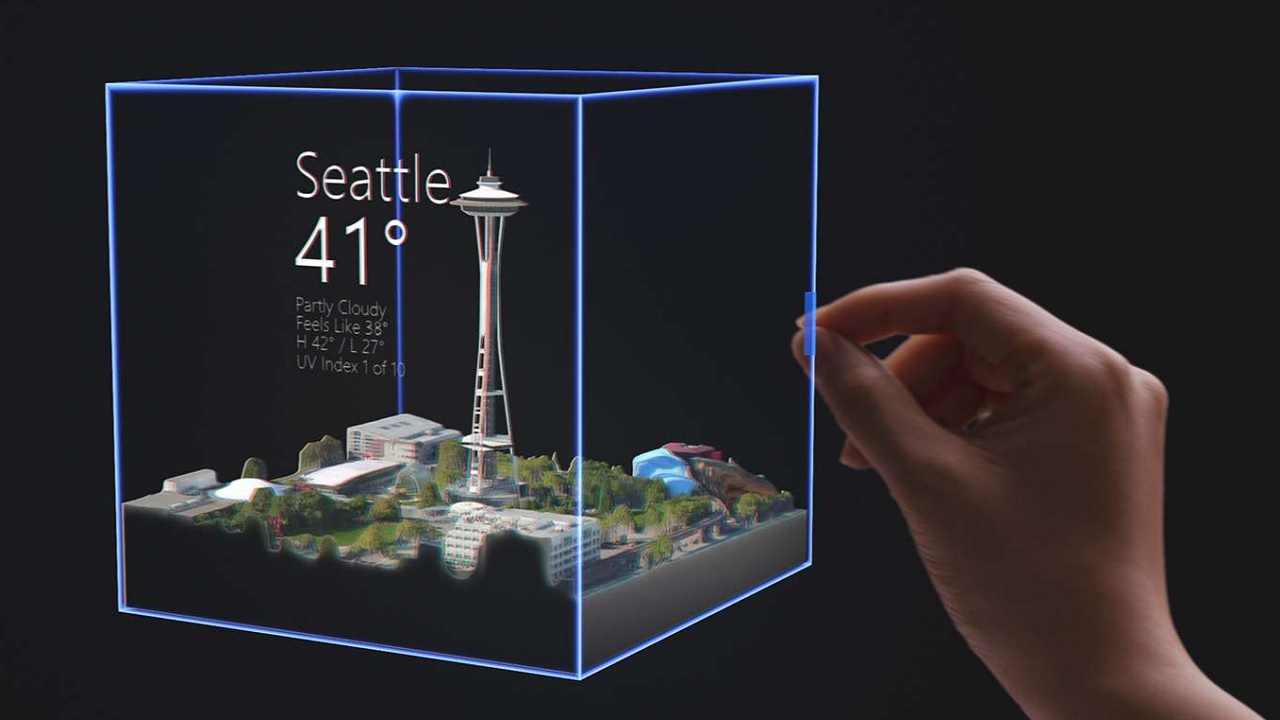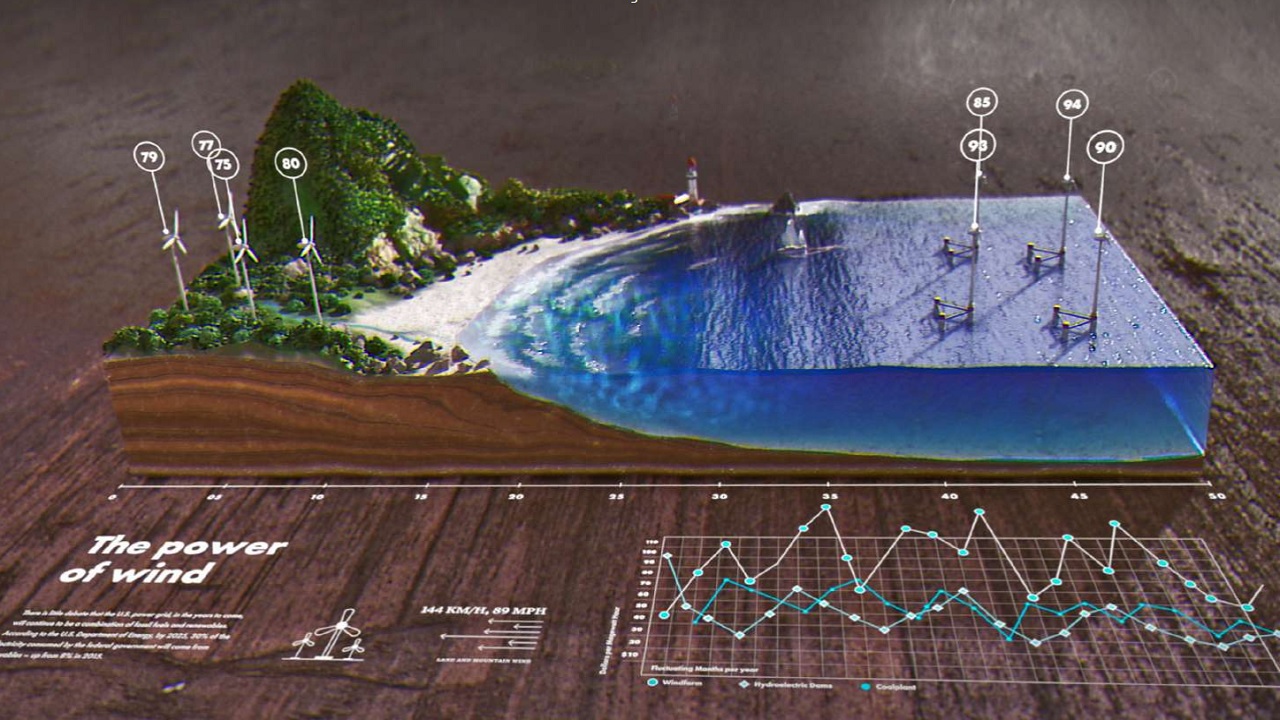What HoloLens 2 says about the future of augmented and mixed reality
AR isn't quite ready for the big stage, but it's getting closer every day

Four years after the rollout of the original HoloLens, Microsoft announced its successor at this years Mobile World Congress, a technology conference focused on mobile hardware and innovation. Creatively dubbed HoloLens 2, the new headset is lighter and, according to Microsoft, three times as comfortable as the first headset, sporting a vastly improved field of view and better resolution.
HoloLens 2 uses a brand new solution for projecting three dimensional holograms onto your eyeballs. While the original unit used tiny projectors to produce images on layered glass that were then diffracted and combined to create three dimensional holograms in the real space around the user, HoloLens 2 beams lasers at mirrors oscillating at up to 54,000 cycles per second and uses the reflected light to paint holograms onto a display. That display is made of what Microsoft calls waveguides, two sheets of custom glass (to the original unit's three) purpose built to reflect holograms into your eyes.
The net result of all this incredibly impressive technology is that the second iteration of Hololens has a field of view nearly double that of the original unit. Instead of images disappearing completely or clipping half out of existence when you move your head, holograms are much more persistent and, with resolution being increased from 720p to 2K per eye, much more detailed and crisp. Microsoft says that with the new HoloLens, users will be able to read holographic 8 point type without difficulty.

As a tech junkie, these kind of novel solutions to mixed reality problems are fascinating, but what does it mean for the future of the field? Unfortunately, for gamers and consumers, the news isn't great. Microsoft is positioning the HoloLens 2 as an enterprise device and only allowing companies to pre-order. Even if individual users were allowed to buy the device, most of us would be priced out of consideration anyway—the HoloLens 2 starts at $3,500, $500 more than the already exorbitant price of the original developer model (which has never been commercially released). The company says that the HoloLens was never intended for or marketed towards individual consumers, though that claim rings a bit bogus given the E3 showcases and other conferences where the company has proudly exhibited demos of Minecraft running on the original unit.
Alex Kipman, the technical fellow for AI and mixed reality at Microsoft, says that HoloLens is intended for firstline workers, medical professionals, and factory workers who can use holographic technology to improve and streamline their performance. During the MWC demo, videos were shown of surgeons referencing holographic displays of patient's vital signs and medical information mid-surgery, and industrial workers seeing technical holographs overlayed on machinery they were building and repairing, indicating where parts fit together and how to use tools to fit and install them. It's a powerful way to visualize how HoloLens can improve productivity or potentially even save lives, but Kipman is insistent that the current iteration of the tech isn't consumer-ready.
"This is the best, highest watermark of what can be achieved in mixed reality and I'm here to tell you that it's still not a consumer product," he said in an interview with The Verge. "It's not as immersive as you want it to be. I would say that until these things are way more immersive than the most immersive product, way more comfortable than the most comfortable product, and at or under $1,000, I think people are kidding themselves in thinking that these products are ready."

That's disappointing news for anyone who was looking forward to playing Minecraft in three glorious dimensions on their living room coffee table. But the leaps and bounds Microsoft has achieved in just the second iteration of this device paint an optimistic picture of the future of mixed reality. Already, users who have gotten hands-on time with HoloLens 2 describe it as a much more comfortable experience—the overall weight of the unit has been reduced and, more crucially, a number of the components have been shifted towards the back so that the center of gravity isn't so front-loaded. Instead of being able to wear the HMD for a maximum of around 20 minutes without getting an aching neck, outlets are reporting that the new unit could be comfortably worn for hours at a time. That step alone moves HoloLens out of the interesting novelty space into something that could be genuinely useful and commercially viable.
Keep up to date with the most important stories and the best deals, as picked by the PC Gamer team.
There are also some other important quality of life improvements. Gone are the bizarre, inconsistent gestures users were forced to learn to interact with the first headset. The HoloLens 2 tracks multiple points of articulation on user's hands, allowing them to use more intuitive gestures like grabbing and pushing to interact with and resize holograms. And little touches, like a visor that can be lifted up when you're interacting with people in person, mean you'll able to wear the headset in real-world settings more easily without having to constantly adjust or take it off.
All of this points to future versions of HoloLens that are more traditionally consumer-facing. It may be another five years (probably closer to ten, conservatively) before there's a mixed-reality headset Microsoft is comfortable mass producing for the consumer market, but the HoloLens 2 proves that the company is capable of continuing to push and refine the technology, and committed to being leaders in the mixed-reality space. Given how deeply-invested Microsoft is in gaming and consumer electronics, a HoloLens headset for Xbox or that synergizes with PC gaming applications seems inevitable.

The more these headsets get out into the wild, the more developers will become comfortable and familiar with the technology behind them, so that when they do reach the consumer production threshold, there will be a strong appetite to develop games and applications for them. And it's not just Pokémon Go clones that could benefit from an injection of mixed reality—imagine 3D, digital board games on your card table that require no careful unboxing or cleanup, that you can play with friends around the world, or being able to grab UI elements like a map or inventory in an FPS and pull them off your screen and position them to either side, close enough to touch.
While VR continues to expand and involve, and become increasingly consumer friendly with standalone headsets and more sophisticated tracking technology, mixed and augmented reality remain a few steps behind. Virtual reality is poised for broad mainstream adoption, while the challenges of getting MR HMDs to the point that they're user-friendly, polished, and accessible enough to integrate in our daily routine haven’t quite been surmounted.
In the meantime, AR and MR will continue to infiltrate our lives through mobile devices and alternative headsets like Vuzix or Intel's Project Vaunt, but it's comforting to know that a technological giants like Microsoft (and Google, who have also pivoted their Glass offering towards enterprise consumers) are toiling away building mixed reality solutions that will be slick and affordable before they reach the mass market, rather than alpha-testing their tech in public and eroding interest and resources prematurely.


